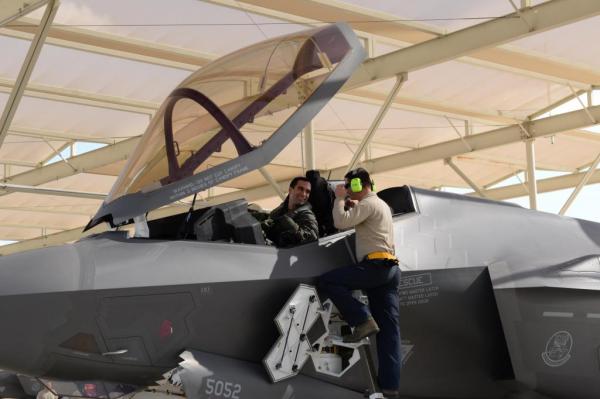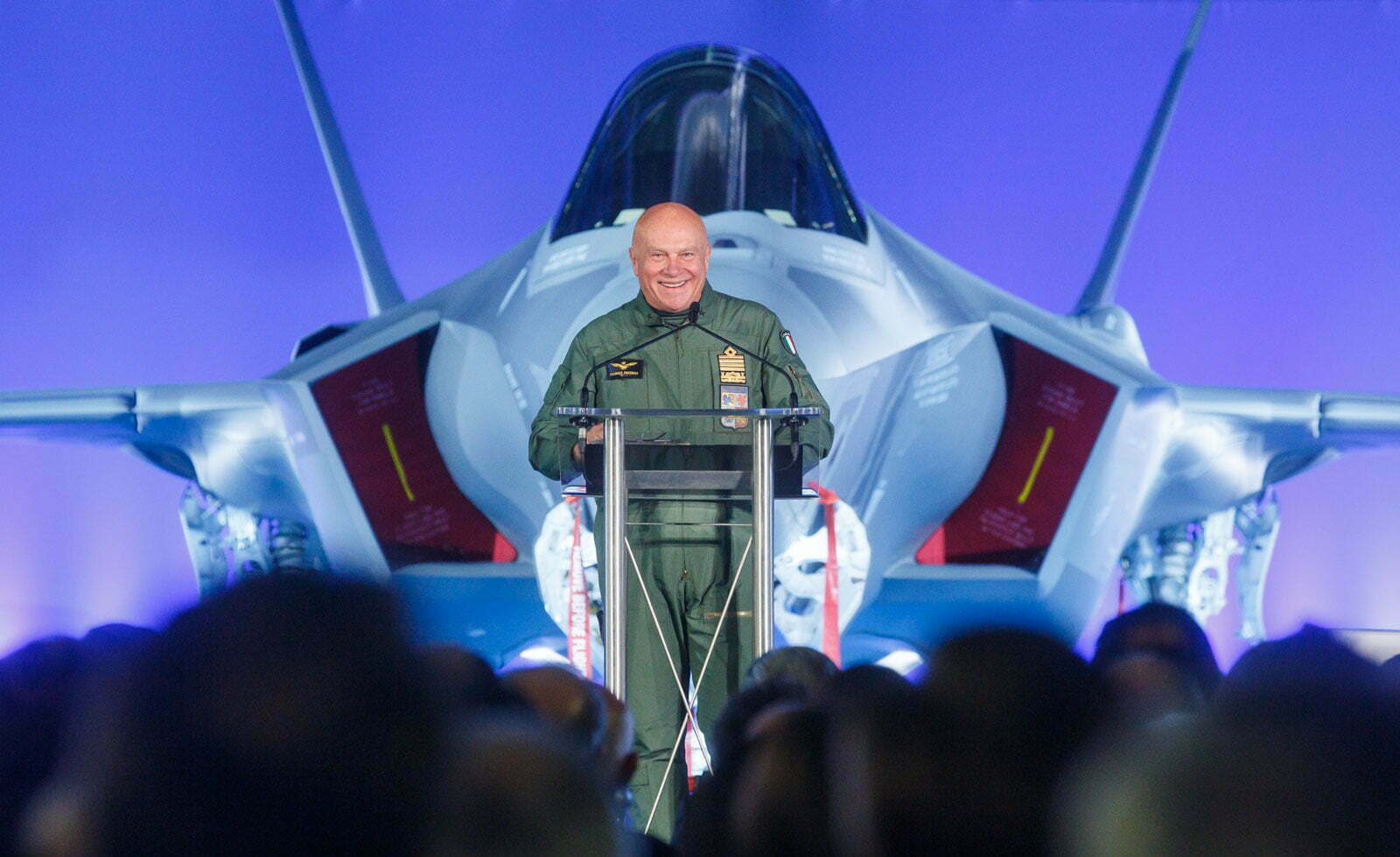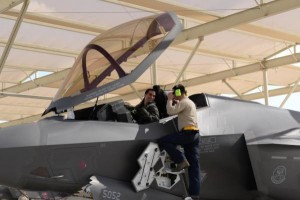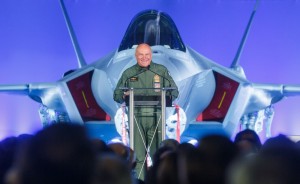2016-01-19 According to an article published by our partner RID, the second Italian built F-35 (AL-2) was flown for the first time at the Cameri air base on January 15, 2016.
The Italian Air Force is training its pilots at Luke AFB where the first flights for training took place late last year.
Italy is firmly committed to buy 38 aircraft by 2020, but the government remains unclear about its commitments for LRIP 9 and 10.
In November 2015, Lockheed signed the preliminary contract with the Pentagon for LRIP 9 and 10 but the Italian government has not yet made a clear commitment to produiton aircraft in those LRIPs.
AL-1 will fly across the Atlantic with Italian tanking early next month for testing at Pax River.
The video below highlights the first flight by Italian pilots at Luke AFB last Fall.
One of the jets used was an Australian F-35, highlighting the integration of the F-35 global partners.
Credit: 56th Fighter Wing Public Affairs:11/05/15
And in an interview with the two Italian pilots on November 6, 2015, the pilots provided their perspective on their first flight and their sense of the way ahead.
Question: I assume that you went through what has become the basic syllabus of training of about seven weeks with simulators and classrooms, and then flew the jet?
Answer: We have about six weeks in the simulators and classroom training on the TTPs, (Tactics, Training and Procedures) to get read to fly the airplane. We have an exam with a USAF trainer and then we are ready to fly the jet.
Question: When we spent time with the Brits and the Marines, we learned that they flew each other’s aircraft, and you did the same by flying USAF and Aussie F-35s.
Could you explain how unusual this is at this phase of your training?
Answer: What you mention is one of the key points of this program.
Starting from training to tomorrow’s operations, we are learning from the ground up.
Shaping common TTPs is crucial to shaping an integrated approach.
We are training on the same basis from the ground up.
This is the very first combat aircraft program which has this capability built into.
We have come to Sheppard to train with the USAF, but it is a trainer, and we do not share TTPs as we are doing with the F-35.
We start with the shared TTPs and then go from there.
Question: In other discussions with experienced pilots who have become F-35 pilots, all mention that the mental furniture associated with operating a multi-mission aircraft versus a multi-tasking aircraft is very different.
They also emphasized how crucial it is to get into the F-35 to move on to understand the transformation of airpower.
What is your sense of this shift?
Answer: The aircraft is so easy to fly that you spend 99 per cent of your time shaping a strategy as you use your two screens.
You are focused on your mission, instead of flying your jet and trying to achieve your mission.
We are very happy to be part of the program and to understand from the ground up how significant a shift the F-35 coalition capability is going to be.
Of course, we are also happy to be building our own jets and bringing them to Luke next year.
The first five Italian-built jets will take off from Cameri and fly to Luke next year.
Question: You flew an Australian jet yesterday.
You do not normally work with Australian pilots, but you will get to know them from the ground up as well as you train at Luke and fly each other’s jets.
What is your sense of this dynamic?
Answer: The young guys will grow up in a very advanced warfighting and multi-national environment because of this program.
They will be used to not just working together from time to time in an exercise, but will build in common tactics from the ground up and help each other innovate as well.
Question: We went to ACC recently, and one of the points made was that there are very few F-22 pilots free to work the culture of air power transformation based on their experience.
With the F-35 program, there is the opportunity to generate many more pilots and for these pilots to trigger ongoing airpower transformation.
What is your take on this opportunity?
Answer: Usually when we have exercises, we have to integrate on your own type of jet.
Here you are working from the ground up to shape an integrated approach.
It is hard for non-pilots to understand how significant this difference between shaping interoperability via exercises versus integration built in from the ground up.
Question: What does an integrated F-35 fleet bring to coalition combat, from your point of view?
Answer: We will write the TTPs together.
The commonality from the very beginning will be built into any operation which you do with your coalition partners.
And we are working from the ground up with the USAF, which is different as well from before.
We have made significant progress in the past two years, which is often not grasped by those not involved in the program.
And let me return to the point we discussed earlier about the difference between multi-mission and multi-tasking and the impact on operations.
You do not have to switch your configurations for air-to-air to air-to-ground or whatever the mission for which you have been pre-configured.
You can do what you need to do with the situational awareness built into the jet and the fleet and then fly to the mission.
Also, see our Special Report on the evolution of Italian airpower.
This report looks at the evolution of Italian airpower under the impact of the introduction of the F-35 and the modernization of the Eurofighter.
The Italians, like the British, are undergoing a double transition, whereby the Eurofighter is being modernized in two ways: namely, subsuming air-to-ground missions and facilitating the transition in the replacement of the Tornado by adding a new AESA radar to the airplane, and introducing the F-35 to help shape joint force transformation.
In the Italian case, the new Cameri facility is a key element for the Italian Air Force, Located on an Italian Air Force base used for logistics, the Italian government under the management of Alenia Aermacchi (AAeM) has built a 22 building facility to support the F-35 program.
This double transition is a compressed version of the broader topic of 4th/5th generation transition similarly to what the Italian Air Force is doing and the interaction between the RAF and the IAF could be a good driver for change.
And notably the European Air Group has set up a Typhoon integration cell at the same as it is tasked to work through the challenges and opportunities associated with the reshaping of airpower under the fifth generation warfare transition.
This means that the Italian and British opportunity for leadership is clear in a challenging period of airpower history. The clear advantage of a global transformation enterprise associated with the F-35 is that transformation in airpower does not simply depend on the United States, nor weighed down by a number of U.S. legacy discussions, which impede change.
With regard to the Italians, they have proven to be forward leaning in spite of all the fiscal and political challenges, which is an amazing achievement.
And the industrial and technological aspects of the Italian achievements are significant as well.





